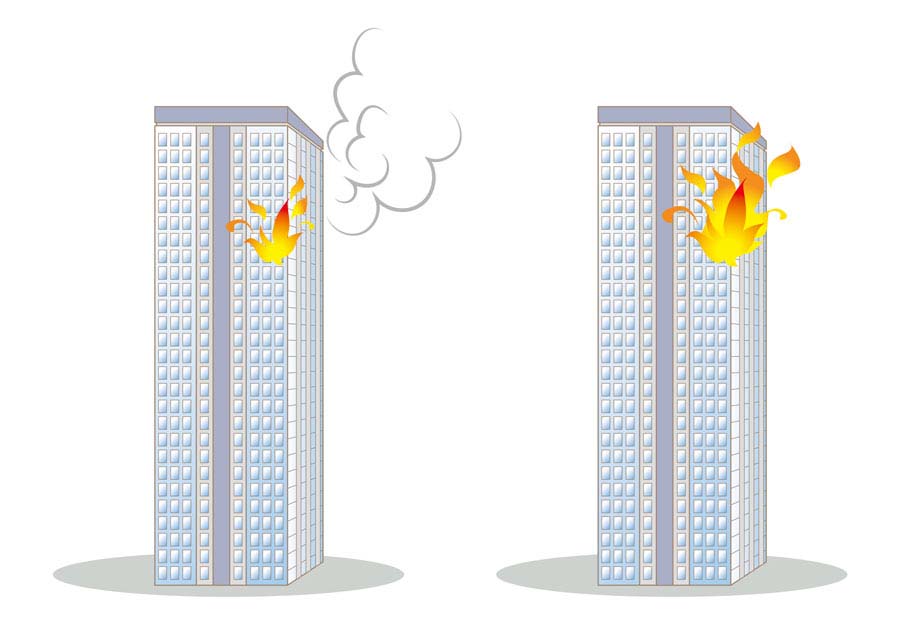UK Building Safety Act 2022

UK Building Safety Act 2022
The Building Safety Bill (BSB) was published as a result of increased building safety concerns; concerns which evolved significantly in the wake of the Grenfell Tower tragedy back in June 2017.
Nearly five years on from the tragedy, the BSB finally received royal assent on 28 April 2022 as the Building Safety Act 2022 (BSA). The BSA is the product of months of consideration and amendments through parliamentary ‘ping pong’, set to acknowledge the provisions of the BSB set forth by Michael Gove to ensure developers are responsible for remediating certain defective buildings.
Those in the construction and development industry will be held accountable for the safety of residents and those with management duties or a legal interest in the building, in particular, will sustain the bulk of costs for managing building safety risks following occupation.
Features of the BSA we are set to see include:
Introduction of an accountable person
- Occupied “higher-risk buildings” will now require an accountable person (AP) to be identified. Each AP will be responsible for the day-to-day management of the structural and fire safety of such higher-risk buildings.
- Higher-risk buildings are now defined by the BSA as buildings in England being at least 18m in height or has at least 7 storeys. The Impact Assessment which accompanied the BSB estimated that 13,000 existing buildings and an additional 400-500 new buildings a year will meet the new definition under the BSA. The definition increases the number of higher-risk buildings that must have an AP.
- An AP as defined by the BSA is someone who holds a legal estate in possession of the common parts or, alternatively, someone who has relevant repairing obligations in respect of any part of the common parts. An AP is therefore expected to be a freeholder or long leaseholder of a higher-risk building or an individual or entity who is responsible for the repair and maintenance of the common parts of the higher-risk building. This can be a management company, housing association or commonhold association or any and each one of them.
- Duties imposed by the BSA for the AP include a reporting system required by the Building Safety Regulator; carrying out risk assessments, enforcing measures that reduce/prevent major incidents, applying for a building assessment certificate and appointing a building safety manager.
- Failure to comply with such duties is a criminal offence which carried a penalty of an unlimited fine and/or a maximum of 2 years imprisonment.
Leaseholder protections
- Costs associated with the new duties imposed by the BSA can be passed to leaseholders by way of a service charge. Those possibly affected are those with a lease granted for 7 years or more for properties in buildings over 11 meters or 5 storeys containing at least 2 dwellings.
- Costs that can be charged back to leaseholders include works required to ensure the buildings meet the new safety standards and even works to remedy historic defects.
- There has been much political discussion on whether it is fair to expect leaseholders to be liable for such costs. One of many proposed amendments to the BSB included a limit to leaseholder contributions for historical building defects to a maximum of £250. Unfortunately for leaseholders only 187 members of the House of Lords voted in favour with 209 members voting against the amendment.
- In the place of a blanket limit on leaseholder contributions for historical building defects, the BSA instead includes other protections for leaseholders:
- If a building owner or landlord is, or is linked to, the original developer or where the landlord’s group’s net worth exceeds £2million per affected building, they must absorb the cost of the cladding and non-cladding defect works in full. They will not have the ability under the BSA to pass such costs to the leaseholder.
- Where building owners or landlords’ net worth does not exceed £2million per affected building, they will be entitled to charge leaseholders to contribute up to a maximum of £10,000 (and £15,000 in Greater London) and spread over 10 years.
- Costs associated with the removal and remediation of external cladding cannot legally be passed down to leaseholders.
- Flats valued at less than £175,000 (and £325,000 in Greater London) then no costs can be passed on to leaseholders.
- Remediation orders and remediation contribution orders requiring developers and landlords to carry out remediation works in a specified timeframe
- Costs for enforcement action against a building owner cannot be passed to leaseholder through a service charge.
- Clearly, leaseholders may still be asked to contribute up to a “capped” amount, but it is worth noting that this will only be after all other avenues have been pursued first by the building owners/landlords.
- Leaseholders who have exercised statutory rights or first refusal or collective enfranchisement are not protected under the BSA.
Commentary
Whilst parts of the BSA are already in force and we will likely begin to see changes within the next 2 months, majority of the BSA’s provisions will only come into force pending the development of secondary legislation or incrementally in accordance with the government’s transition plan.
The long-awaited BSA impacts every stage of the certain buildings’ life stemming from planning and design to occupation and management. It is therefore crucial for all those involved in the construction and residential development industry, namely building owners and management companies, to use this period to prepare for the changes well in advance of the remaining provisions coming into force.
Contact our Real Estate Dispute Resolution team today
If you would like to discuss any issue relating to this blog, please do not hesitate to contact a member of the Real Estate Dispute Resolution Team on 01895 201759 or contact us via the enquiry form at the top of our Property Disputes page.
